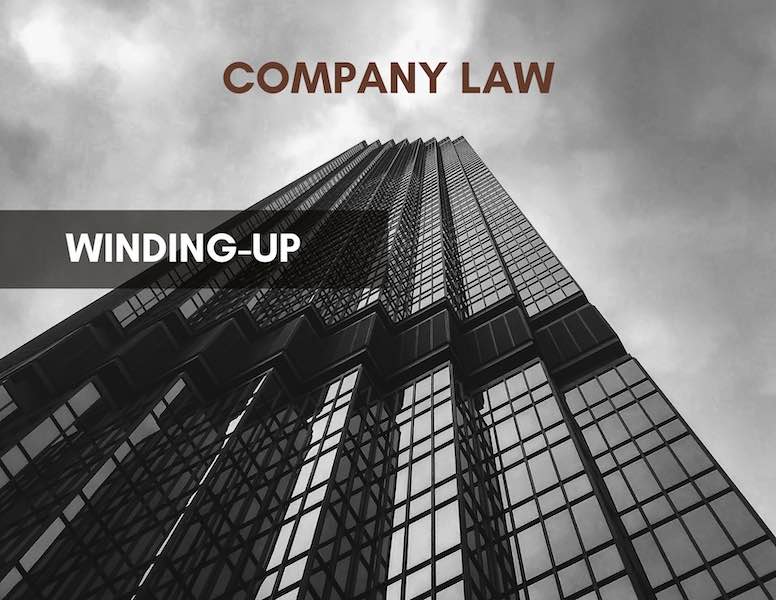Post Winding-Up Examination: The Curtains Ring Down, What Next?
by Voon Su Huei ~ 12 September 2020
After a company is wound up, the appointed liquidator takes control of the business, sells the company assets and distributes the proceeds of the same to the company’s creditors. Sometimes, in the course of liquidation, issues are raised as to alleged wrongdoing by directors while running the company, for example. The liquidator then has the option of making an application to summon inter alia the directors to court to testify on the issues raised. This article sheds light on the general mechanism of post winding-up examination.
Two main provisions under the Companies Act 2016
Post winding-up examination is governed by two main provisions, namely section 502 and 503 of the Companies Act 2016[1]. In gist, both these provisions allow the court to order the examination of “any person whom the Court deems capable of giving information concerning the promotion, formation, trade dealings, affairs or property of the company”. In practice, the persons called for examination would commonly be the directors of the company; though it is possible for personnel such as former employees to be summoned for examination.
The main difference between section 502 and section 503 is that a section 502 application can be made by the liquidator, creditor or contributory of the company. The power to make a section 503 application, however, is only vested in the liquidator. In this regard, a section 503 application appears to have an additional threshold in that this application is made upon the liquidator filing a report to court to state that in his opinion, i) a fraud has been committed; ii) any material fact has been concealed by any person in the promotion or formation of the company or by any officer in relation to the company since its formation; or iii) any officer of the company has failed to act honestly or diligently or has been guilty of any impropriety or recklessness in relation to the affairs of the company. In any case, there are common principles that can be distilled from caselaw to determine when a court would allow a section 502 or section 503 application. These principles are explored below.
Principles governing an application for post winding-up examination
When faced with an application for post winding-up examination, the court will determine if there is any reasonable basis for calling a proposed examinee and whether it would yield any real benefit to the company in calling for the said examination. After all, there are legal costs involved in calling for a post winding-up examination and if the mechanism is not used properly, this may result in an unnecessary depletion of the scarce funds of the company[2].
The court will ask itself a few pertinent questions before allowing a post winding-up examination. As per the case of Hicom Bhd v Bukit Cahaya Country Resorts Sdn Bhd [2005] MLJU 418, these questions include but are not limited to the following:
(a) Is the procedure necessary for the business of preserving, collecting, managing or distributing the company’s assets?;
(b) Is the applicant (liquidator, creditor or contributory) conducting himself reasonably in the circumstances?;
(c) Is it for the benefit of the company (being wound up)?;
(d) Is there any alternative process to obtain such information either by way of sworn affidavit or otherwise?,
(e) Is there any oppressive effect on the examinee?;
(f) Does the process amount to an abuse of process?.
An applicant filing an application under section 502 or section 503 of the Companies Act 2016 needs to ensure that there is at least some evidence (documentary or otherwise) connecting the proposed examinee and the issues raised during liquidation. The threshold applied by the court is not “absolute need” but that of “reasonable requirement”.[3] This means that if a liquidator in good faith highlights a possibility of fraud in his/her report, the court would have jurisdiction to make an order for post winding-up examination. It is not open to the proposed examinee to oppose the order on grounds that fraud has not been strictly proven in the report[4].
That being said, in exercising its discretion to make an order for post winding-up examination, the overarching concern that the court has is that the application should not be an “overkill” or be unduly oppressive. For instance, if the court finds that the proposed examinee would not have any additional information or knowledge to share with the applicant during an examination, the court is disinclined to allow the application, especially if the proposed examinee appears to have cooperated with the liquidator from the outset[5].
On the issue of oppression, there is no distinction in principle between making an order for examination against officers of the company versus third parties. An order for examination is not made against directors of the company as a matter of course. Conversely, if a third party happens to possess relevant information but is manifestly disinclined to co-operate, the absence of a fiduciary or contractual relationship with the company would not impinge upon this exercise of the court’s power[6].
Nonetheless, the case of Cloverbay Ltd v BCCI Ltd (1991) Ch cautions that an order for examination of a third party carries a degree of greater possible oppression, especially when a third party owes no duty to a company. At the end of the day, an order under section 502 or 503 application boils down to a careful balancing exercise as encapsulated in Cloverybay Ltd (supra): if the information required is fundamental to any assessment of whether or not there is a cause of action and the degree of oppression is small, the balance will come down in favour of making the order. Conversely, if the liquidator is seeking merely to dot the i's and cross the t's of a relatively clear claim by examining the proposed defendant to discover his defence, the balance would come down against making the order.[7]

